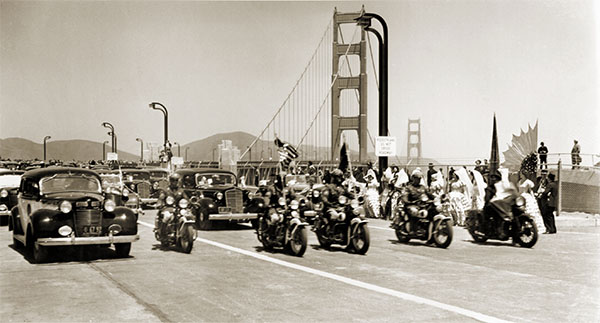
Period of construction: Just over four years. Construction commenced on January 5, 1933 and the Bridge was open to vehicular traffic on May 29, 1937.
Cost: $35 million dollars in the 1930’s, approximately $1.5 billion in year 2016 dollars.
The name Golden Gate does not refer to the Bridge’s color, it is the name of the entrance to the San Francisco Bay from the Pacific Ocean, which is called the Golden Gate Strait. A suspension bridge is the structural opposite of an arch.
The curving cables of a suspension bridge are in tension, experiencing pulling forces. The opposite or upside down picture of those curves looks like an arch. The forces in the arch, compression forces, are the opposite of the tension forces that the suspension bridge cables experience.
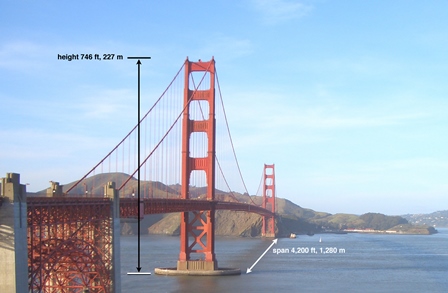
How big is the Golden Gate Bridge? When constructed in 1937, it set the world record for the longest bridge span, the distance between supports (4,200 ft, 1,280 m) and also the tallest towers.
Height of tower above water: 746 ft = 227 m
Height of tower above roadway: 500 ft = 152 m
Length of suspension span including main span and side spans: 1.2 miles = 6,450 ft = 1,966 m
Total length of Bridge including approaches from abutment to abutment: 1.7 miles = 8,981 ft = 2,737 m.
The width of Bridge: 90 ft = 27 m
The weight of the Bridge, not counting the concrete anchorages, is 840 million pounds (382 million kg) - heavier than the Empire State Building.
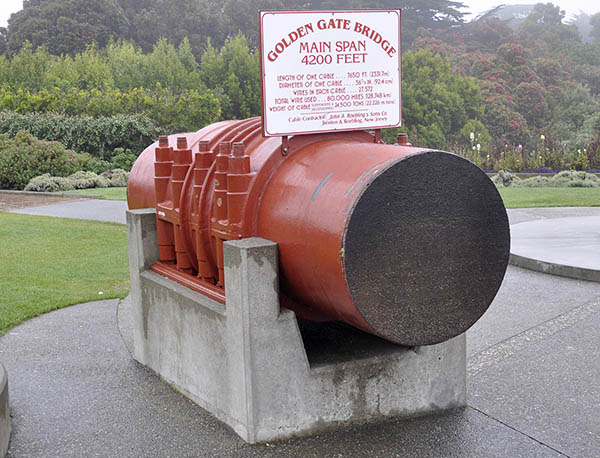
Cable section exhibit is located near parking lot behind the pavilion.
How big is the main cable? The diameter of one main cable: 36 3/8 in. = 0.92 m
Length of one main cable: 7,650 ft = 2,332 m
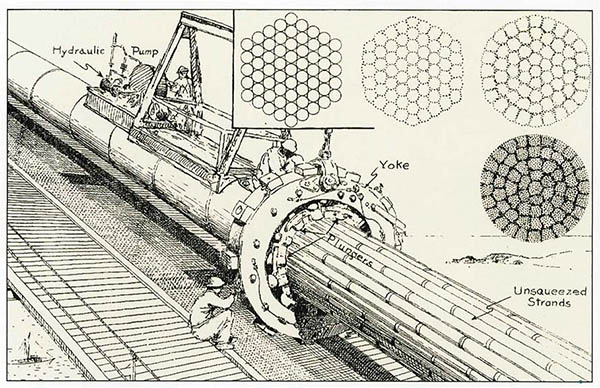
Each cable is composed of 27,572 wires. If the wires were one continuous length, they could wrap around the earth over three times. Shown above is a diagram of how the 27,572 wires in a cable were grouped together and then tightly compressed into their final form by a hydraulic press.
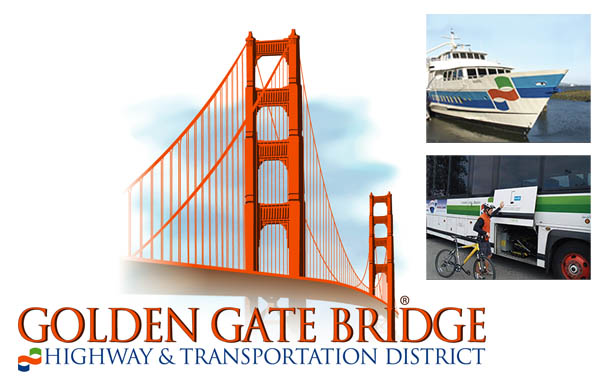
Why is it called the Golden Gate Bridge, Highway and Transportation District? Traffic jams are rare on the Bridge because the Bridge District added ferry (1970) and bus (1972) transit service. Annually, 40 million vehicles cross the Bridge; two-and-one-half million passengers are transported by the ferries; and over 6 million passengers ride the buses.
For more interesting facts and figures, visit the History & Research section of our site.
Exhibit designed by Robert Reitherman, CUREE